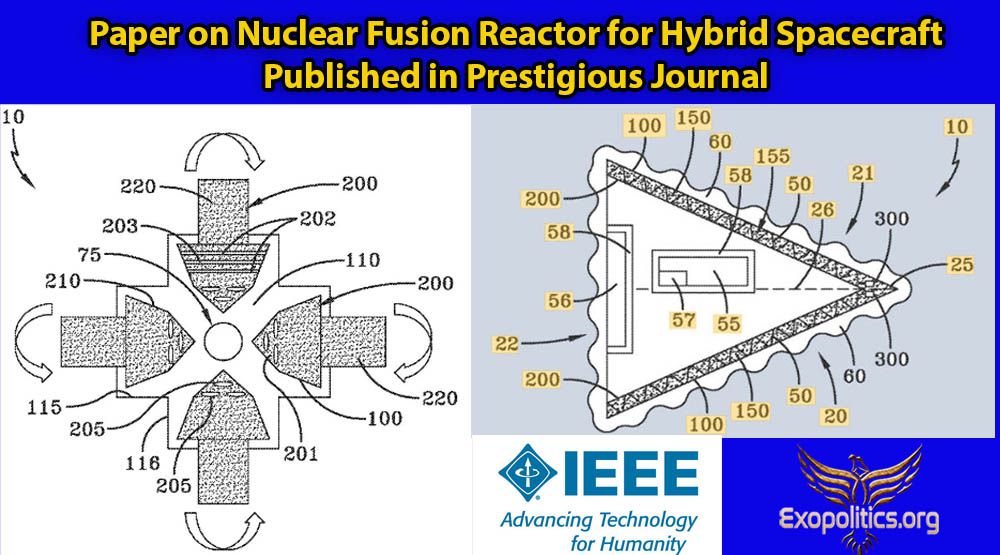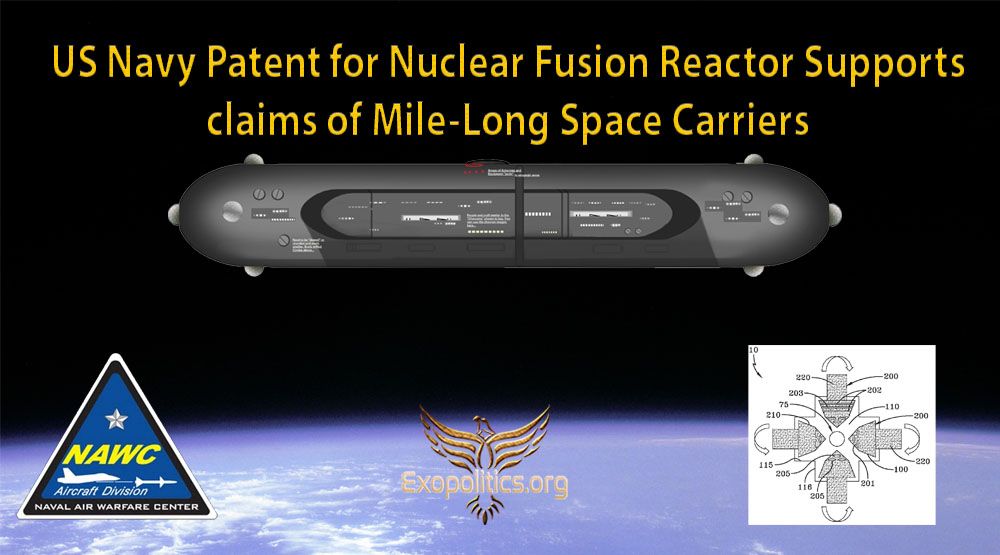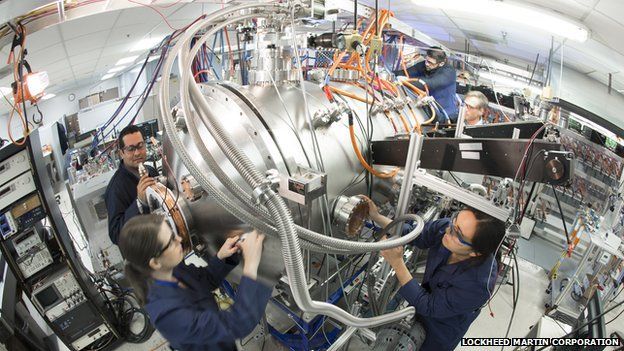Paper on Nuclear Fusion Reactor for Hybrid Spacecraft Published in Prestigious Journal
A major breakthrough has occurred in the scientific community’s almost unanimous skeptical reaction to Dr. Salvator Pais’ patent for a portable nuclear fusion reactor that would power his proposed “Hybrid Aerospace Underwater Craft” – a prestigious engineering journal has published a paper authored by him describing his incredible invention and its applications.
The paper is titled “The Plasma Compression Fusion Device—Enabling Nuclear Fusion Ignition” and it appeared in the November 2019 edition (Vol 47, Issue 11) of the journal, IEEE Transactions on Plasma Science. The journal is published by the Institute of Electrical and Electronics Engineers, and only publishes articles that are peer reviewed in a blind submission process.
The importance of Pais’ paper being published in such a prestigious journal is that prominent electrical engineers have concluded that his concepts are worthy of being taken seriously even though most scientists, including patent examiners, have expressed outright skepticism about their feasibility.
In a January 22 article describing the publication of Pais’ paper, the Drive’s Brett Tingley interviewed a number of scientists that ridiculed Pais’ ideas as “pseudo-science and empty jargon”. Yet, as Tingley has pointed out previously, the Chief Technology Officer of the Naval Aviation Enterprise, Dr. James Sheehy, firmly supports Pais’ inventions as “operable”, and decades of government research support the feasibility of similar concepts.
Now the IEEE paper adds another level of scientific credibility to Pais’ invention since the anonymous reviewers clearly concluded it was not “pseudo-science and empty jargon”.
In the abstract to his paper, Pais writes:
The plasma compression fusion device (PCFD) generates the energy gain by plasma compression-induced nuclear fusion. This concept has the capability of maximizing the product of plasma pressure and energy confinement time to maximize the energy gain, and thus give rise to fusion ignition conditions….
The concept uses controlled motion of electrically charged matter through accelerated vibration and/or accelerated spin subjected to smooth, yet rapid acceleration transients, to generate extremely high-energy/high-intensity EM radiation (fields of high-energy photons) which not only confines the plasma but also greatly compresses it so as to produce a high power density plasma burn, leading to ignition. The PCFD concept can produce power in the gigawatt to terrawatt range (and higher) with input power in the kilowatt to megawatt range and can possibly lead to ignition (self-sustained) plasma burn. Several important practical engineering and operational issues with operating a device such as the PCFD are discussed.
Pais’ nuclear fusion reactor with a proposed output of 1000 gigawatts (one terrawatt) or even higher, far exceeds the maximum output of the largest nuclear power plant in the US, Palo Verde in Arizona, which produces a paltry four gigawatts in comparison. Indeed, Pais’ invention dwarfs the power supply of the nuclear fission reactors powering the new Gerald Ford Class aircraft carriers, which produce only 0.7 gigawatts (700 megawatts).
Put simply, if Pais’ invention proves to be feasible, then it could virtually end the fossil fuel industry overnight and revolutionize the aerospace industry since it is fully portable.
In fact, Pais proposed the nuclear fusion reactor as the power supply for his “Hybrid Aerospace Underwater Vehicle” he described in an earlier patent granted on December 4, 2018, after it had been earlier turned down by a skeptical examiner. Pais fully intended his nuclear plasma fusion reactor to be used in future generations of air and space craft.
In an earlier article, I discussed how Pais’ nuclear fusion reactor would be capable of powering the kilometer-long spacecraft that several insiders claimed to have been secretly built and deployed as far back as the early 1980s.
According to the late William Tompkins, a former aerospace systems engineer, Nautilus class nuclear powered attack submarines were retrofitted to be able to perform the hybrid maneuvers of underwater, air and space operations in the late 1970s. The retrofitted submarines were used as prototypes for the larger kilometer-sized spacecraft then secretly under construction near the Wasatch Mountains, Utah.
The retrofitting of a nuclear submarine would have required swapping out its nuclear fission reactor, with something far more powerful, like Pais’ nuclear fusion reactor, in order to convert submarines into hybrid water, air and space craft. All this occurred back in the late 1970s, which means that something similar to Pais’ nuclear fusion reactor must have existed at that time and was being secretly used by the US military.
This is where the testimony of David Adair becomes important to understanding the history of the clandestine development and the use of nuclear fusion reactor engines. Adair claims that back in 1971, he built a prototype “electromagnetic fusion containment engine” for a 10-foot rocket he developed with the active support of the US Air Force. Adair says that he was backed by General Curtis LeMay, the former USAF Chief of Staff from 1961 to 1965, who secretly provided Adair with resources and USAF personnel even though he was only 17 at the time on a science project.
Documentary support for Adair’s remarkable testimony comes from local newspaper reports describing the Air Force certificate he won for his 10-foot rocket project. An April 19, 1971 news story from the Mount Vernon News says that his rocket exhibit “has been selected as the most outstanding in the field of engineering sciences”.

Adair’s story was first covered in a 2002 interview with Robert Stanley published in Nexus Magazine. In short, Adair claims that as a result of his success in building a prototype nuclear fusion engine for his 10-foot rocket, he was given access to a much larger “electromagnetic fusion containment engine” at Groom Lake, Nevada (aka Area 51). Adair learned that the engine at Area 51 was extraterrestrial in origin and the Air Force was attempting to reverse engineer it.
While there are differences in the way Adair described the operation of his “electromagnetic fusion containment engine” to Pais description of the operation of his “Plasma Compression Fusion Device”, the similarities are remarkable. Both use electromagnetic energy in unconventional ways to ignite a nuclear fusion process in a portable engine that can generate an enormous energy output.
Adair’s testimony gives us crucial insights into the timeline for the development of nuclear fusion engines using plasma and electromagnetic devices. These were being studied and developed in the early 1970s, making the initial prototypes ready for deployment by the late 1970s – the time Tompkins says that the Navy began deploying its retrofitted Nautilus submarines as hybrid water, air and space craft.
It’s no coincidence that Pais’ inventions are being exposed to the scientific community at the same time that Space Force has been officially created. As detailed in my Secret Space Program book series, both the US Air Force and Navy have a number of antigravity craft that use non-conventional energy systems for their power supply. The most important undoubtedly are the nuclear fusion reactors that are ignited via plasma and electromagnetic devices such as Pais and Adair’s inventions.
The antigravity spacecraft secretly developed by the USAF are being increasingly leaked to the general public as exemplified in photos taken of triangle and rectangle-shaped antigravity craft near MacDill Air Force Base in 2017 and 2018.
Space Force, as discussed in my USAF Secret Space Program (2019), has been created to unveil to the general public the arsenal of spacecraft and weapons that have been developed in classified programs and covertly deployed. This is supported by statements made by the USAF Secretary, Barbara Barrett, in December 2019, when she said the following about classified Air Force technologies:
Declassifying some of what is currently held in secure vaults would be a good idea… You would have to be careful about what we declassify, but there is much more classified than what needs to be.
The publication of Pais’s paper in a prestigious engineering journal in November 2019 is a sure sign that the scientific community is being given advance notice that revolutionary energy systems exist that use unconventional electromagnetic and plasma devices to ignite the nuclear fusion process, and scientists/engineers need to start paying attention.
© Michael E. Salla, Ph.D. Copyright Notice
[Special Note: I will be presenting Dr. Salvator Pais’ revolutionary patents and the relevance to Secret Space Program disclosure at my upcoming Webinar with Portal to Ascension on March 21, 2020. You can register here.]Further Reading
- US Navy Patent for Nuclear Fusion Reactor Supports claims of Mile-Long Space Carriers
- US Navy Regards Electromagnetic Propulsion & Tesla Shield Patents as Operable
- US Navy Disclosing Secret Space Program Technologies through Patents System
- Are US Aircraft Carriers secretly protected by Electromagnetic “Tesla” Shields?
- Trump signs Space Force Act – Stage Set for Secret Space Program Disclosure
- USAF Secretary & Congressman want to Declassify Secret Space Programs






